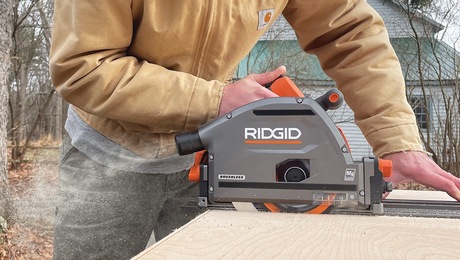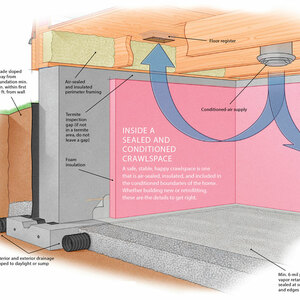Talking with my best client about finishing out a condo. She keeps saying she wants plaster walls. We’re in south Texas … probably hasn’t been a real plaster job here since Santa Ana was run out of town.
Today i started asking detailed questions. Does she want to see the trowel marks, or is it a smooth finish? Well, I suppose smooth is ok, but i don’t really want the trowel marks. Oh great, good communications. Finally, she says that she thinks sheetrock walls are too flimsy, but she didn’t use that word … can’t think what she said. She is currently renting a high dollar poorly built condo, and she is seeing the ills of modern quickie construction.
So … here’s the question. What can I do to make the walls seem more solid? They will be built with metal studs. I thought about using all 5/8″ rock, which I read somewhewre is 50% more stiff. What about adding a layer of 1/2″ plywood under the rock? Maybe add sound batt insulatio in all the walls to keep the hoillow sound under control?
“When asked if you can do something, tell’em “Why certainly I can”, then get busy and find a way to do it.” T. Roosevelt


















Replies
If you use 5/8ths I'm thinking you 'll be alright. Maybe a layer of something behind it would make it "sound" more solid. But, the big issue is the metal studs. I would slip in at the halfway point, a stiffener called here ''cold rolled reinforcment''. It's a steel channel about an inch wide that has a "U" shape. You run it in the precut knockouts in the stud and turn and lock it down in the sq. shaped part of the knockout. (Knockout looks like a keyhole). This will provide a good stiffener (lateral stability) to all the studs. If you need longer than the pc comes, overlap one stud space and wire together.
edit. around here it comes in 14' lengths. If your wall doesn't allow you to slip that in (easy in malls) and shove it through the full 14', then cut it and install a couple pcs in the part you have done, pulling it back through the remaining wall as you complete it.
Remodeling Contractor just outside the Glass City.
Quittin' Time
Edited 10/12/2005 7:59 pm ET by calvin
Add 1/2" channel tapped down in the slot provided in the metal studs. You'll notice the studs have punched holes and a slot. If studs have to be cut for height,cut only at the top. Orient the studs so all slots will be under punched holes, upside down and the channel will fall out.One row of channel in the middle will be fine.The channel can be cut easily by hacksawing just the 1/4" sides,then bending up and down a coiple of times and it will break off. Go to a drywall supply house if your local stores do not carry the channel.
mike
IMHO thicker drywall, possibly multiple layers, would help. Also you might look into using fire-rated drywall as it is stiffer than the regular stuff. It has long fiberglass strands mixed into the gypsum and this keeps it from crumbling in the heat of a fire. Also makes it more rigid.
Two layers of 5/8" fire-rated GDW each side makes for a very solid wall. The fire-rated drywall is not a whole lot more expensive. Might be worth buying a sheet and comparing it to the regular stuff The difference is noticeable.
Don't run a cut edge across a bare forearm because the long fibers tend to dig in and itch more than most fiberglass. Other than not rubbing your eyes after cutting it or physically working in fibers from a cut edge into soft flesh there is no greater discomfort working with this stuff than regular drywall.
I wired a couple of houses that used 5/8" fire-code drywall on the ceilings. The builder, who is a great guy who builds real quality into simple and inexpensive homes, likes to use the stiffer stuff because he uses more insulation in the attic than most and he likes the ceiling to be remain perfectly flat over time. He thinks using the stiffer GDW helps. Sounded good to me.
Maybe think about using the closed cell expanding insulation. It'll make a flimsy wall withstand anything but a natural disaster.
We used to run 5/8 on all ceilings, of course, we were constantly low balled, and had to change to 1/2 to stay competitive. Hard to explain to customer the difference, most don't really care. If they can save $300 by using 1/2", they will.
Eddie,
We are finishing up a doctor's office where we did 5/8 on both sides of each exam room wall and used Icynene as the sound barrier. This is the first time we used Icynene. This approach worked great for sound deadening and the walls are very solid.
Bruce
Is the Icynene a spray foam?
"When asked if you can do something, tell'em "Why certainly I can", then get busy and find a way to do it." T. Roosevelt
Eddie,
Icynene is a spray foam insulation. The Central Texas distributor is Advanced Insulation of Texas. Real nice folks to work with We did the entire envelope of the structure for insulation and the exam rooms for sound deadening. I am sold on this stuff. It is more expensive than Fiberglass but really no comparison on noise deadening and insulation. The San Antonio number for them is 210.568.8107
Edited 10/13/2005 6:45 am ET by Hiker
It was pretty common in the big summer homes of Wyoming/Colorado to rock everything in 5/8", insulate all interior walls with unfaced fiberglass and frame everything out of 2x6s. It really does make a difference in the "feel" of the room. The spray foam sounds interesting.
If I were to double layer the walls, would you glue the two pieces of rock together? With what adhesive?
"When asked if you can do something, tell'em "Why certainly I can", then get busy and find a way to do it." T. Roosevelt
Eddie,Gluing is not needed between layers, but is sometimes done. Some use adhesive from tubes (mastic) and others use joint compound. Glueless makes for easier repairs down the road. Just use 2" screws on 2nd layer, if 5/8" plies are used.Bill
I've done a little homework on this because I live in a 110 yo house in New Orleans that originally had plaster. Hurricanes and foundation setteling finished with those but as I repair/replace them I am constantly trying to achieve the hardness of the finish and the quietness of it. Basically all of the ideas put forth in this discussion are good ideas. The beauty of plaster is that it is heavy and hard and this is what you need to replicate to get the same qualities. Metal studs are more difficult because they are very low mass. Anything that you can do to add mass to the assembly and to tie the assembly togeather to make it stiffer will help. I'm as cheap as the next guy and so have considered such things as cutting scraps of drywall into 3 1/2" strips and gluing them to the sides of the studs to add mass. Several layers would be better and they would add both mass and stiffness to the assembly. You might also visit U.S. Gypsum's website. They have a huge variety of products and specifications for how to install them for best results. The problem is of course finding a local supplier of the materials. Good Luck.
By the way, my house is just fine. 15 years of rebuilding everything in and on the house to a hurricane spec paid off. Never let anyone tell you that the the extra cost for quality does not have a payoff.
It may be kind of a "low tech" idea, but - How about just adding a whole bunch more studs? Like use 5/8" drywall and studs 8" O.C. or something like that.
The idea of the icynene foam is good too. But I suspect it would be expensive, and would make remodelling/pulling new wires a pain.
You could just tell her how much more it's gonna cost her to have "stiff" walls, and she may decide conventional walls are O.K. after all. (-:
Are you sure she doesn't mean too soft. IMO the difference between drywall and plaster is the hardness of the surface. In my house we did something similar to D-mix, mud with color and verithane mixed up and trowled on about 1/8 thick. The result is a hard, washable finish. Similar to, but not plaster.
There has got to be plasterers in your area, too. She just has to pay for it.
Mike
Trust in God, but row away from the rocks.